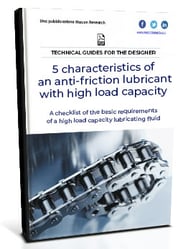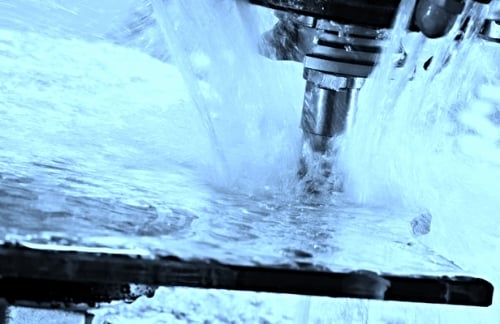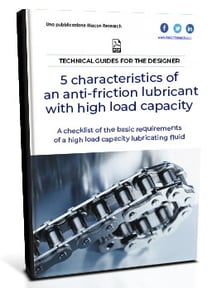Friction force and synthetic lubricants
What exactly is friction force? How is it measured? In what forms does it arise? What is the difference between the static coefficient of friction and the dynamic coefficient of friction? How can a lubricating grease reduce these?
Friction! Thanks for existing! Life wouldn't be that simple without you. Walking, climbing stairs, grabbing objects ... an absence of mechanical friction would prevent the simplest daily activities from being performed.
Any kinematics to perform its function correctly requires two surfaces in contact and in contrast. Simply think of the transmissions - a variation in torque and rotation speed would not be possible without contact friction.
In this article, we will introduce and analyse the concept of friction with particular reference to the lubrication aspect, mechanical wear and the possible ways of reducing it thanks to the use of synthetic lubricating greases and oils.
Heavy-duty lubricants
Complete guide of key characteristics
A complete identikit of a lubricating fluid with high load capacity and low friction coefficient
The term "friction" means any dissipative phenomenon that is generated between two solid or fluid bodies in contact and in the presence of movement.
To better explain the concepts underlying the phenomenon, it is necessary to analyse in more detail the main protagonists: the contact surfaces.
If we interpose a lubricating fluid between the two surfaces, we can distinguish between two types of friction:
- External - the means by which wear takes place, representing the force that prevents or hinders the movement of two surfaces in contact, mainly deriving from the microscopic contacts that are created between the surfaces, which tend to adhere to each other causing deformation of the materials and grooves, with the energy generated by the contact being transformed into heat and/or mechanical vibrations
- Internal - friction between the molecules within the lubricating film interposed between the materials in contact, also known as viscosity and one of the most important variables
TRIBOSYSTEM
Between the BODY and COUNTER-BODY
You can see the external friction on the left and the internal friction on the right

Depending on the morphology of the surfaces, friction can be further distinguished into:
- Sliding - that which is generated during the pure sliding of two surfaces, in the absence of rolling and/or rotation

- Rolling - that which is generated during rolling, such as in ball bearings between the races and the rolling elements.

- By drilling - created upon contact between two bodies due to the rotation of one of the two around its axis

Mechanical wear
The reduction of friction between two bodies in contact and in reciprocal sliding can be obtained by interposing a substance capable of reducing the shear stress necessary to allow sliding. This substance, which can be solid, liquid or gaseous, is called LUBRICANT.
The lubricant can intervene by producing a reduction in the friction coefficient, defined as the ratio between the force Fr opposing the movement and the driving force Fa.

Depending on the magnitude of the two contrasting forces, we can distinguish two important values:
- Static coefficient when Fa <Fr
- Dynamic coefficient when Fa> / = Fr
Coefficient of friction and speed: the Stribeck curve
In each tribosystem, it is possible to identify variable interface conditions according to the sliding speeds of the parts in contact. A method for identifying the extent of the variation in relation to the reciprocal sliding speeds is the use of the Stribeck curve, in which the coefficient of friction is related to the reciprocal sliding speeds of the surfaces in contact.

From the image, it is possible to identify three different operating zones with the relative course of the coefficient:
- Limit - insufficient lubricating film, where the surfaces in reciprocal sliding are in direct contact by more than 50% so erosion and consumption of materials are significant - lubricant formulations under these conditions must be equipped with special anti-wear additives
- Mixed - intermediate condition in which there is a partial separation of the surfaces in contact, combined with areas of total absence of the lubricating film (from 20-40%), where within this operating area, there is a progressive lowering of the dynamic friction coefficient with an increase in speed due to the progressive establishment of the lubricating carrier film
- Fluid - total separation of the contact surfaces, the phenomenon can be assimilated to the floating effect of rolling tires on wet asphalt, where the hydrodynamic condition represents the optimal state for maintaining the tribosystem in full efficiency with the least possible mechanical wear

A good lubricant formulation has as its objective the reduction in the coefficient of friction and the reduction of the relative mechanical wear that is generated. 5 fundamental requirements shall be analysed in the guide below for such purpose:
-
Adequate chemical composition of the base oil
-
Use of solid lubricants in the formulation
-
Use of anti-wear (AW) and extreme pressure (EP) additives
-
High viscosity of the base oil
-
High thermo-oxidative capacity




